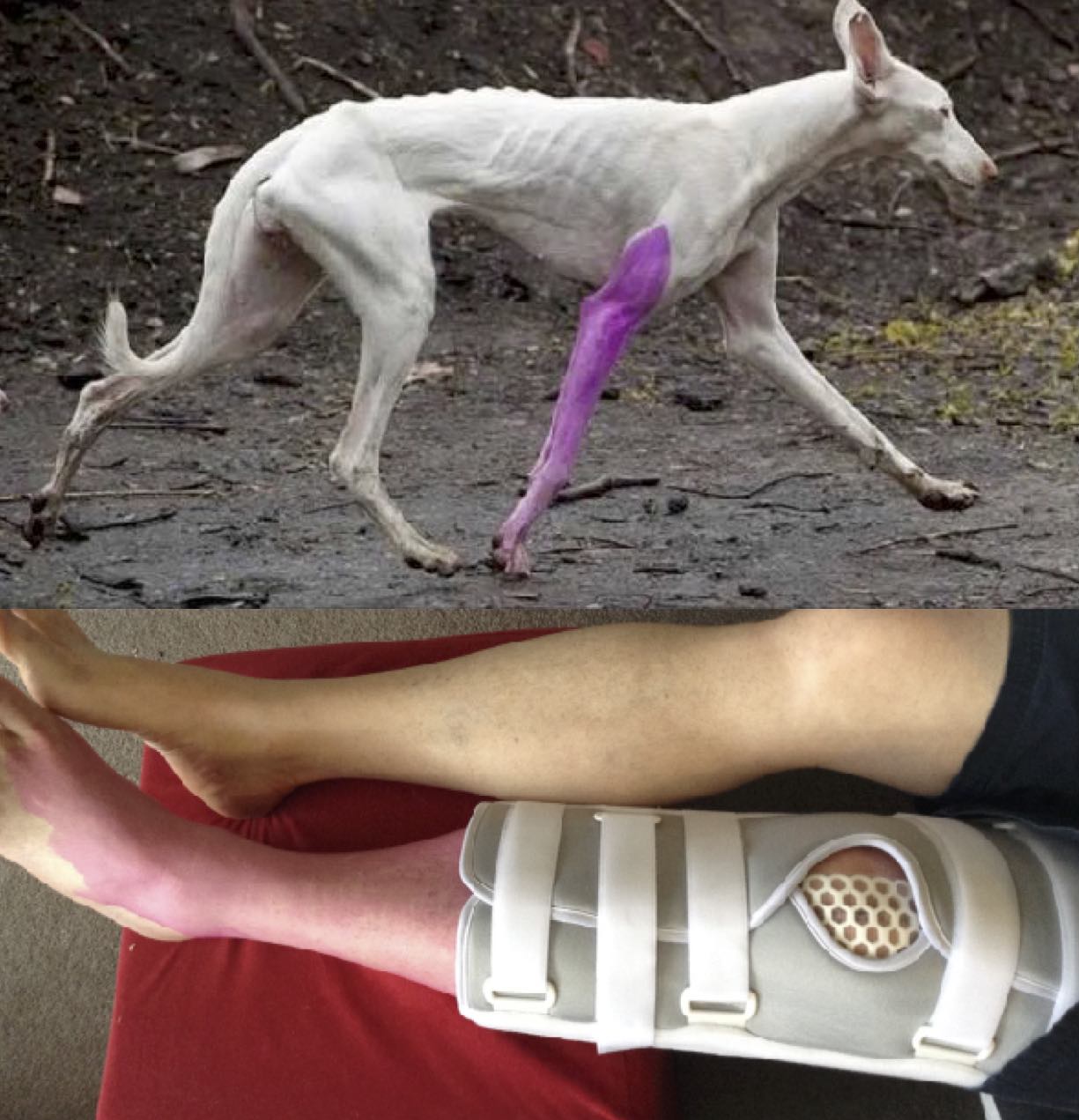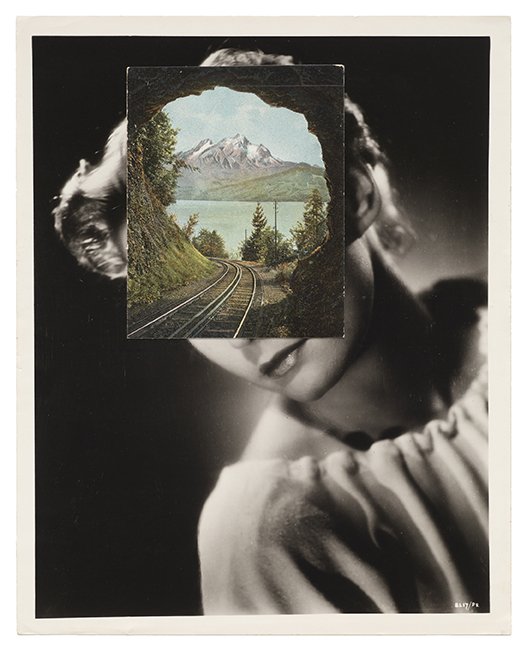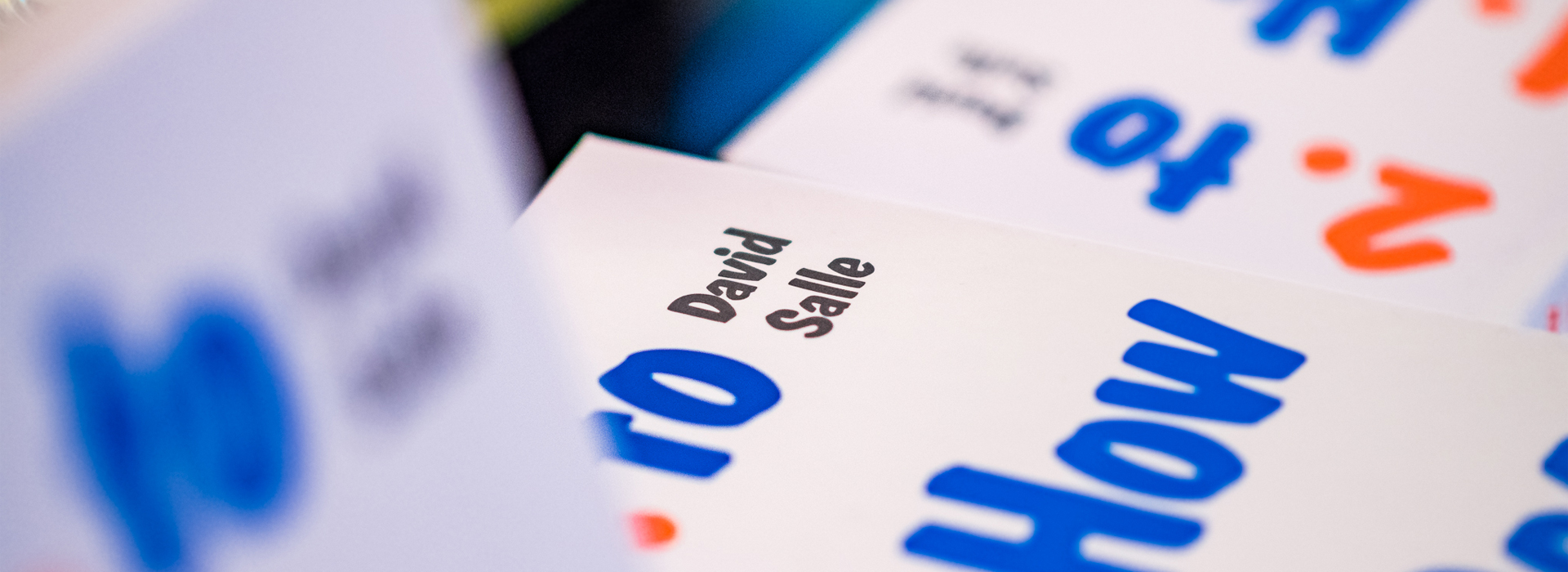•


Dead and Alive
.
I love John Stezaker’s Masks. In curating John Stezaker: Lost World, they were my starting point. He takes old black-and-white head shots and lays older scenic postcards over them, across the eyes, so they line up magically, in an uncanny merger of face and place. This simple idea plays out in nuanced ways.
Stezaker prefers showing the Masks as individuals, but I like seeing them en masse. It shows how repetitious, perhaps compulsive, they are. Stezaker is drawn to particular genres of scenic postcard. He returns to caves and rock arches, rivers and waterfalls, arched bridges and buildings. Is this his bent or are they simply the kinds of view that will interlock with faces? Is he imposing his will or coaxing out something latent in his sources?
Stezaker talks about fascination, about being in thrall to the image, as if he were not in control but akin to a medium—his sources speaking through him. But is that mere pretext? The question—agency or fascination?—hangs over his whole project.
The Masks also dance on a knife edge between life and death. Stezaker says masks are necessarily morbid, being dead, inanimate faces worn over vital, animate ones. But, the faces Stezaker masks are photos, already fixed. Paradoxically, by masking them with other dead images he breathes new life into them. Beautiful people of yesteryear, long gone, are resurrected and reanimated, their faces caught in metamorphosis. Petrifying, putrefying. Becoming, blooming.
John Stezaker: Lost World finishes its tour at Melbourne’s Centre for Contemporary Photography, 21 September—11 November 2018.
•

Content Warning
.
I’ve been enjoying David Salle’s essay collection, How to See, which was published back in 2016. It’s self-consciously old fashioned, down to its anachronistic design and coarse black-and-white reproductions. Its pieces juggle Salle’s artist’s insights into art works with in-the-know, behind-the-scenes asides about the artists. It’s art criticism as dinner-party repartee. Salle name drops and sound bites like there’s no tomorrow, but it’s all rather readable, balancing a dash of erudition with a lot of writerly flair. As a painter, Salle can be repellant (in a good way); as a writer, he’s easy to like—good company. What I like most is the way he gives voice to my own prejudices. Who doesn’t like that? I particularly adore his swipes at contemporary art’s current fetish—content. ‘Aboutism’ we call it. Here, he scores some killer blows.
Take this: ‘The focus on the what in art has been going on forever, or at least since 1865, the year Édouard Manet provoked the audience with Olympia—a painting of a reclining, dark haired courtesan, skin pale as chalk, adorned only with a pair of “come hither” mules and a black choker. You can imagine the dialogue in the cafes, over a glass of absinthe: “He painted what?” Subject matter—the what—can of course be a big deal. It’s also easy to talk about. But more to the heart of the work, the thing that reveals its nature and quality, is the how, the specific inflection and touch that go into its making. To take a work’s temperature, look at its surface energy. Like syntax and rhythm in poetry, it’s the mechanics that reveal an artist’s character. They determine the way art will get under our skin, or fail to.’
And this: ‘Sometimes what we call an idea is really more of an enthusiasm, the passing intellectual weather. Artists are curious, they pursue all kinds of obscure knowledge. Some like to do research, and art seems like as good a place as any to show off one’s interests. The ideas with staying power are those that intersect with an artist’s inclination for form, causing it to deepen and expand, like a paper flower that blooms when you put it in water.’
•
Who Am I?
I am a contemporary-art curator and writer, and Director of the Institute of Modern Art, Brisbane. I have held curatorial posts at Wellington’s National Art Gallery, New Plymouth’s Govett-Brewster Art Gallery, Dunedin Public Art Gallery, Auckland Art Gallery, and, most recently, City Gallery Wellington, and directed Auckland’s Artspace. My shows include Headlands: Thinking through New Zealand Art for Sydney’s Museum of Contemporary Art (1992); Action Replay: Post-Object Art for Artspace, Govett-Brewster Art Gallery, and Auckland Art Gallery (1998); and Mixed-Up Childhood for Auckland Art Gallery (2005). My City Gallery shows include Yvonne Todd: Creamy Psychology (2014), Julian Dashper & Friends (2015), Francis Upritchard: Jealous Saboteurs (2016), Colin McCahon: On Going Out with the Tide (2017), John Stezaker: Lost World (2017), This Is New Zealand (2018), Iconography of Revolt (2018), Semiconductor: The Technological Sublime (2019), Oracles (2020), Zac Langdon-Pole: Containing Multitudes (2020), and Judy Millar: Action Movie (2021). I curated New Zealand representation for Brisbane’s Asia-Pacific Triennial in 1999, the Sao Paulo Biennale in 2002, and the Venice Biennale in 2003 and 2015. I am co-publisher of the imprint Bouncy Castle.
Contact
BouncyCastleLeonard@gmail.com
+61 452252414
This Website
I made this website to offer easy access to my writings. Texts have been edited and tweaked. Where I’ve found mistakes, I’ve corrected them.
.